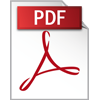GLASS, INK, PAPER & PULP TESTING:
 Glass testing protocols involve a series of tests and procedures to assess the quality, performance, and compliance of glass products. Here are some common testing protocols for glass:
Glass testing protocols involve a series of tests and procedures to assess the quality, performance, and compliance of glass products. Here are some common testing protocols for glass:
- 1. Visual Inspection: Visual inspection is performed to identify any defects, such as cracks, chips, or bubbles, on the glass surface. This is done by visually examining the glass under proper lighting conditions.
- 2. Dimensional Measurement: Dimensional measurement is conducted to ensure that the glass product meets the specified dimensions and tolerances. Techniques like calipers or optical measurement systems are used to measure dimensions accurately.
- 3. Transparency and Clarity Testing: Transparency and clarity testing assess the glass's ability to transmit light without distortion or haze. This is evaluated by visual inspection or using instruments such as haze meters or spectrophotometers.
- 4. Strength and Mechanical Testing: Strength and mechanical testing evaluate the glass's resistance to breakage, bending, or impact. Techniques such as 3-point or 4-point bending tests, ball drop tests, or fracture toughness tests can be performed to assess strength properties.
- 5. Thermal Expansion Testing: Thermal expansion testing determines the coefficient of thermal expansion (CTE) of the glass. This is important to ensure compatibility with other materials and to prevent thermal stress-related failures. Dilatometry or thermo mechanical analysis (TMA) can be used for CTE measurements.
- 6. Chemical Resistance Testing: Glass may undergo chemical resistance testing to assess its resistance to various chemicals or environmental conditions. Immersion tests or exposure tests in specific chemicals can evaluate the glass's resistance.
- 7. Thermal Shock Resistance Testing: Thermal shock resistance testing evaluates the glass's ability to withstand rapid temperature changes without breakage or cracking. This involves subjecting the glass to alternating cycles of hot and cold temperatures and assessing any resulting damage.
- 8. Weathering and Durability Testing: Outdoor glass products need to withstand weathering and environmental exposure. Accelerated weathering tests, such as UV exposure or salt spray testing, simulate long-term exposure and assess the glass's durability.
- 9. Glass Strength Evaluation: Glass strength evaluation determines the maximum load-bearing capacity of the glass. Techniques like ring-on-ring tests, ball drop tests, or 3-point bending tests can be used to assess the glass's strength properties.
- 10. Quality Control and Compliance: Glass testing often involves following specific industry standards or regulations, such as those set by ASTM International or ISO. Compliance with these standards ensures consistent quality, performance, and adherence to regulations.
The specific tests and protocols may vary depending on the type of glass, its intended use, and the applicable regulations or standards. Manufacturers or industry organizations provide guidelines for testing procedures and acceptance criteria.
INK TESTING PROTOCOL
Ink testing protocols involve a series of tests and procedures to assess the quality, performance, and compliance of inks. Here are some common testing protocols for inks:
- 1. Colour Analysis: Colour analysis is performed to evaluate the colour properties of inks. This can include measuring colour coordinates using spectrophotometry or colorimetry, comparing the colour to a standard, or assessing colour consistency and uniformity.
- 2. Viscosity Measurement: Viscosity testing is conducted to determine the flow characteristics of inks. This helps assess their ease of application, processability, and suitability for different printing techniques. Various viscometers, such as rotational viscometers or Ford cups, are commonly used for viscosity measurements.
- 3. Drying Time and Curing Evaluation: Ink drying time and curing characteristics are tested to determine how quickly the ink dries or cures after application. This can involve assessing the time required for the ink to dry to touch, achieve full cure, or become resistant to smudging or rubbing.
- 4. Adhesion Testing: Adhesion testing determines the bond strength between the ink and the substrate. Techniques such as cross-cut or tape peel tests are used to assess the ink's ability to adhere to the surface.
- 5. Printability and Print Quality Assessment: Printability and print quality assessment involves testing the ink's performance in different printing processes, such as offset, flexography, or gravure printing. This can include evaluating factors like dot gain, print resolution, sharpness, and ink transfer.
- 6. Light fastness and Fade Resistance Testing: Light fastness testing evaluates the resistance of inks to fading or colour changes when exposed to light. Techniques like accelerated weathering tests, such as xenon arc or carbon arc exposure, can simulate long-term light exposure and assess the ink's light fastness.
- 7. Rub Resistance and Abrasion Testing: Rub resistance and abrasion testing assess the ink's resistance to rubbing or abrasion. Tests may involve rub tests using a specified method, such as the Sutherland rub test, to determine the ink's durability.
- 8. Chemical Resistance Testing: Inks may undergo chemical resistance testing to evaluate their resistance to various chemicals, solvents, or environmental conditions. Exposure tests or immersion tests in specific chemicals can assess the ink's resistance.
- 9. Print Adhesion Testing: Print adhesion testing assesses the ink's adhesion to the printed substrate. Techniques such as tape pull or cross-cut tests can determine the ink's ability to adhere to the printed surface without peeling or flaking.
- 10. Quality Control and Compliance: Ink testing often involves following specific industry standards or regulations, such as those set by ASTM International or regulatory bodies. Compliance with these standards ensures consistent quality, performance, and adherence to regulations.
The specific tests and protocols may vary depending on the type of ink, its intended use, and the applicable regulations or standards. Manufacturers or industry organizations provide guidelines for testing procedures and acceptance criteria.
PAPER & PULP TESTING PROTOCOL:
Paper and pulp testing protocols involve a series of tests and procedures to assess the quality, performance, and compliance of paper and pulp products. Here are some common testing protocols for paper and pulp:
- 1. Basis Weight Measurement: Basis weight measurement determines the weight of paper per unit area. This is usually measured in grams per square meter (g/m²) and helps determine the thickness and density of the paper.
- 2. Brightness and Whiteness Testing: Brightness and whiteness testing assess the visual appearance of the paper in terms of its brightness or whiteness. Techniques such as brightness meters or whiteness meters measure the reflectance or color properties of the paper.
- 3. Tensile Strength Testing: Tensile strength testing measures the resistance of paper to breaking or tearing under tension. This involves performing tests such as the Elmendorf tear test or the tensile strength test to determine the strength properties of the paper.
- 4. Bursting Strength Testing: Bursting strength testing evaluates the resistance of paper to bursting or rupture under pressure. Techniques such as the Mullen burst test or the Scott bond test measure the pressure required to burst the paper.
- 5. Folding Endurance Testing: Folding endurance testing determines the number of times a paper can be folded before it breaks or shows signs of wear. This helps assess the durability and flexibility of the paper.
- 6. Tear Resistance Testing: Tear resistance testing assesses the paper's ability to resist tearing when subjected to a force or load. Techniques such as the Elmendorf tear test or the tear resistance test measure the force required to initiate or propagate a tear in the paper.
- 7. Thickness Measurement: Thickness measurement determines the thickness of the paper. This is usually measured using thickness gauges or micrometres and helps assess the paper's thickness uniformity and Caliper properties.
- 8. Porosity Testing: Porosity testing evaluates the permeability of paper to liquids or gases. Techniques such as the Gurley porosity test or the air permeance test measure the flow of air or liquid through the paper.
- 9. Ink Absorption Testing: Ink absorption testing assesses the paper's ability to absorb ink without excessive spreading or feathering. Techniques such as the Cobb test or the ink absorptiveness test measure the amount of ink absorbed by the paper.
- 10. Fiber Analysis: Fiber analysis is performed to determine the composition and quality of the pulp fibers used in paper production. Techniques such as microscopic examination or fiber length analysis help assess fiber characteristics.
- 11. Optical Properties Testing: Optical properties testing evaluates the paper's opacity, gloss, or print quality. Techniques such as opacity meters, gloss meters, or print quality assessment methods assess the visual appearance and printability of the paper.
- 12. Quality Control and Compliance: Paper and pulp testing often involves following specific industry standards or regulations, such as those set by TAPPI (Technical Association of the Pulp and Paper Industry) or ISO (International Organization for Standardization). Compliance with these standards ensures consistent quality, performance, and adherence to regulations.
The specific tests and protocols may vary depending on the type of paper, its intended use, and the applicable regulations or standards. Manufacturers or industry organizations provide guidelines for testing procedures and acceptance criteria.

Testing
Read More
Inspection
Read More
Certification
Read MoreTesting Services
- Drugs & Pharmaceutical Testing
- Cosmetics & Essential Oils Testing
- Medical Devices Testing
- Ayush - Ayurvedic Drug Testing
- Food Products Testing
- Agri Commodities Testing
- Fertilizers and Soil Testing
- Animal Food & Feed Testing
- Water - Drinking Water & Effluent Water Testing
- Industrial Oils and Lubricants & Petroleum Products Testing
- Coal & Coke and Solid Fuels Testing
- Ores & Minerals Testing
- Metals & Alloys Testing
- Plastics, Polymer, Rubber & Rubber Products Testing
- Resins & Adhesives Testing
- Paints, Varnish, Pigments & Surface Coating Testing
- Glass & Ink, Paper & Pulp Testing
- Industrial & Fine Chemicals Testing
- Dyes, Acids and Solvents Testing
- Soaps, Detergents & Toiletries Testing
- Packaging & Packaging Products Testing
- Gold & Silver Assaying & Hallmarking
- Cement, Concrete & Building Materials Testing
- Pollution and Environmental Studies
- Microbiological Assays. Etc.,









